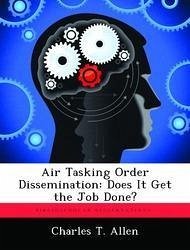The purpose of this research paper is to study limits, capabilities and future possibilities of the Air Tasking Order (ATO) dissemination system. Increasingly, the United States military generally fights as a member of a coalition. Therefore, system and informational interoperability between and among coalition partners will continue to be a key consideration and perhaps a perquisite of coalition warfare. However, some critics point out that the current ATO system cycle cite that the system is too linear and inflexible to meet the dynamic demands of modern aerospace warfare. Particularly worrisome is the ineffective and slow method of dissemination of the ATO to all the execution elements of air power and the nagging interoperability problems of piping the ATO to coalition allies. Given the technical, political, and modern contextual elements (such as transnational threats, war on individuals such as terrorists rather than states) of effectively disseminating the ATO, the obvious question to ask and central thesis of this research paper is: does the current ATO dissemination system get the job done? More to the point, the goal of this research is to highlight some promising avenues to enhance ATO dissemination and recommend further areas of study.
Hinweis: Dieser Artikel kann nur an eine deutsche Lieferadresse ausgeliefert werden.
Hinweis: Dieser Artikel kann nur an eine deutsche Lieferadresse ausgeliefert werden.








